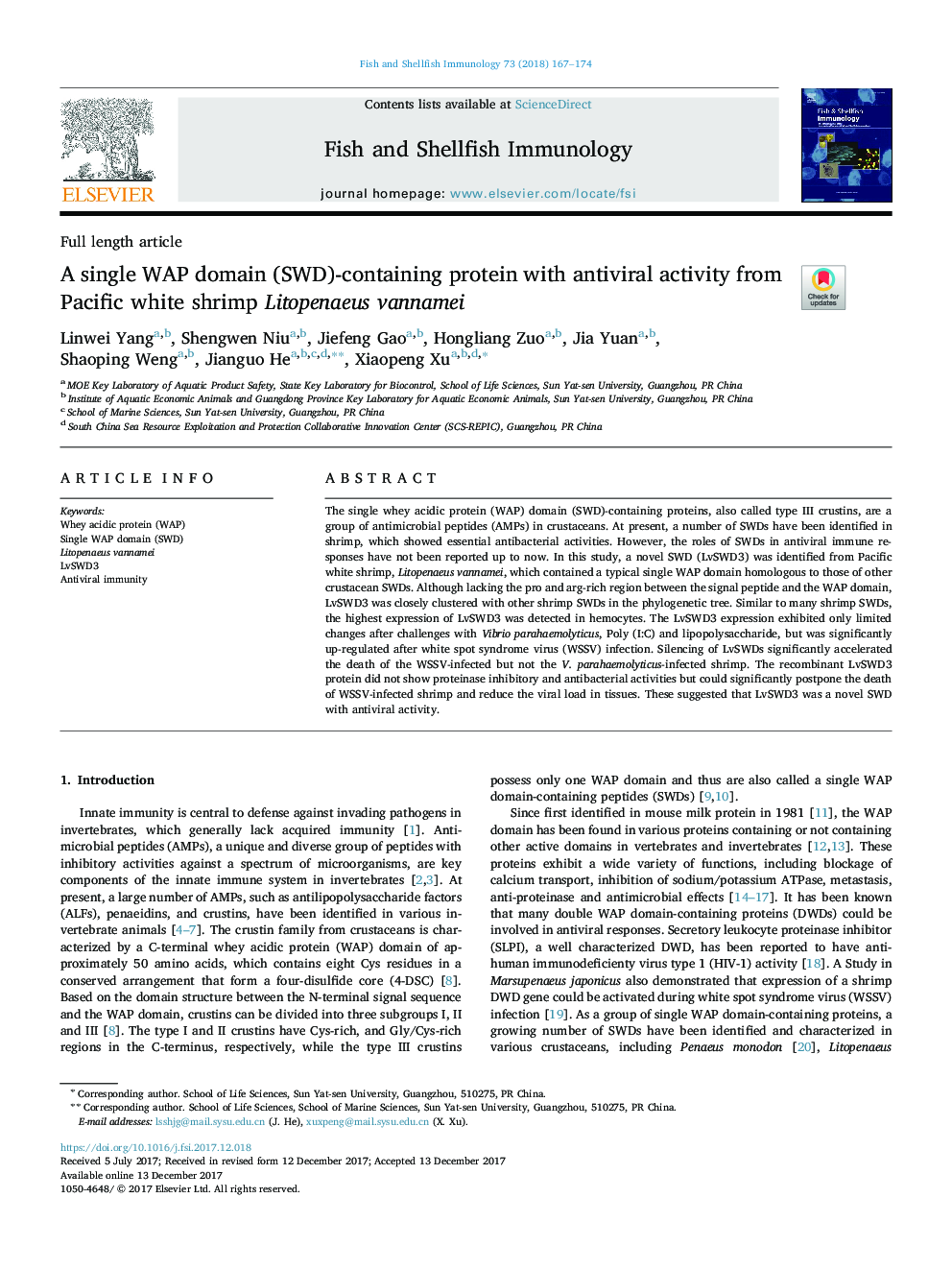| Article ID | Journal | Published Year | Pages | File Type |
|---|---|---|---|---|
| 8498791 | Fish & Shellfish Immunology | 2018 | 8 Pages |
Abstract
The single whey acidic protein (WAP) domain (SWD)-containing proteins, also called type III crustins, are a group of antimicrobial peptides (AMPs) in crustaceans. At present, a number of SWDs have been identified in shrimp, which showed essential antibacterial activities. However, the roles of SWDs in antiviral immune responses have not been reported up to now. In this study, a novel SWD (LvSWD3) was identified from Pacific white shrimp, Litopenaeus vannamei, which contained a typical single WAP domain homologous to those of other crustacean SWDs. Although lacking the pro and arg-rich region between the signal peptide and the WAP domain, LvSWD3 was closely clustered with other shrimp SWDs in the phylogenetic tree. Similar to many shrimp SWDs, the highest expression of LvSWD3 was detected in hemocytes. The LvSWD3 expression exhibited only limited changes after challenges with Vibrio parahaemolyticus, Poly (I:C) and lipopolysaccharide, but was significantly up-regulated after white spot syndrome virus (WSSV) infection. Silencing of LvSWDs significantly accelerated the death of the WSSV-infected but not the V. parahaemolyticus-infected shrimp. The recombinant LvSWD3 protein did not show proteinase inhibitory and antibacterial activities but could significantly postpone the death of WSSV-infected shrimp and reduce the viral load in tissues. These suggested that LvSWD3 was a novel SWD with antiviral activity.
Related Topics
Life Sciences
Agricultural and Biological Sciences
Aquatic Science
Authors
Linwei Yang, Shengwen Niu, Jiefeng Gao, Hongliang Zuo, Jia Yuan, Shaoping Weng, Jianguo He, Xiaopeng Xu,
